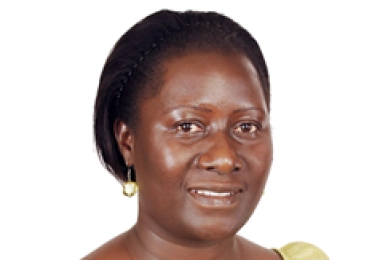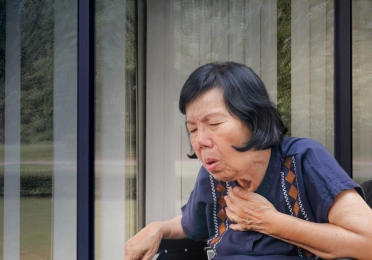Luke Marshall Digital Expert
Luke Marshall, founder and CEO of VitalFlo, a remote monitoring for lung health. This predictive and preventative respiratory health company helps patients and doctors measure and track chronic respiratory health conditions over time with flexible, easy to use solutions both for in-person and virtual care.
Transcript
Mark:
Well, Luke welcome to our podcast. Why don't you tell us a little bit about yourself and your background?
Luke:
Thanks so much for having me. I'm Luke Marshall, I'm founder and CEO of VitalFlo. We are a predictive medicine company for chronic respiratory disease. We are starting that journey by enabling both in-clinic and remote monitoring for folks with respiratory disease. Looking at how to gather more, better and more longitudinal spirometry for these patients. Using that to look at how to transition this whole field into more preventative care for those patients. As far as my background, I've got a Technical Degree in a different field of Material Science but have been passionate about moving technology from the bench into the real world as products, since I was in grad school. That's part of the genesis of the VitalFlo story. I started a research project at UNC School of Medicine and NC State University. We packaged up some of that technology and helped commercialize it to turn it into the company that is today.
Mark:
How does VitalFlo approach to pulmonary function testing differ from what folks might be used to?
Luke:
I was listening to the Race to Value podcast, another great podcast and Doctor Malin Hahn, who I think is also kind of a friend of this show, had a great summary of something that we resonate with quite a bit which is, “perfect is the enemy of the good” in assessing lung health screening results; and what she was talking about is, we have a chronic underdiagnosis of some of these conditions, especially in the US. In general, about half of COPD patients have not ever been given that diagnosis only about a third of COPD patients have had a spirometry test. I think it's because we've made all these good intentions, the clinical standards so high that you must get perfect results in order to move forward. What I've really enjoyed seeing is the progress of the industry towards more testing and then the use of technology importantly to help clean up that data. Our doctors are completely overloaded with too much data. Handing them a whole bunch of messy data is not the solution. If you have an intermediary and data solution like VitalFlo. It can take those additional tests, facilitate those additional tests and then clean it up a bit, then we can get spirometry into the hands of the right patients and into the right doctors. Most of the respiratory care is done by primary care physicians and pediatricians. Spirometry can be a tough exam to do for non-specialists. So how do we make the tools intuitive and easy enough to use for that cohort of doctors so that we can serve all our patients together?
Mark:
I understand that VitalFlo has been working with another friend of the show called Mottram What have you been up to working on with him?
Luke:
Carl recently joined our Clinical Advisory Board. Obviously very distinguished in the field of pulmonary function testing. He wrote the book, at least in the last three editions of the Bible on, how to do spirometry. We have been working together in terms of looping him into different primary care-facing conferences and speaking events to get that training into more physicians' hands and more caregivers' hands. As well as developing a digital training course with him, VitalFlo customers and others have a resource that can make folks more comfortable with doing spirometry as part of their practice. For a lot of primary care docs and pediatricians, they may not have facilitated a spirometry test or pulmonary function test since they were in Med school or since they were in residency. A lot of that's done by the specialists. Packaging that up with the best in the business that are facilitating good clinical standards; packaging up Carl's wisdom on how to do these tests but doing it in a way that's accessible for primary carers, is what we've been building together and spent a lot of time on, and it’s been a lot of fun.
Mark:
You've been involved with telehealth for quite some time specifically RPM remote patient monitoring. How have things changed in the last few years and how you see them changing in the future? Does RPM have a life beyond the pandemic?
Luke:
I think that's a great question and one that's being asked throughout the industry right now. The last time we were all in person was at the American Telehealth Association Conference. Listening in on some of the sessions I think the consensus that's developing in the industry is that RPM and telehealth are going to be a huge part of the future of how we deliver medicine. It's going to be mixed with traditional in-person medicine. The word of the conference that I hadn't heard before going to the conference was “hybrid care” and how do you facilitate transitioning patients from an at-home setting or remote setting and seamlessly getting them back into the clinic? Having a smooth handoff of patient care in that transition, the smooth handoff of patient records and data, and cleaning that up so that doctors can make efficient good quality medical decisions on behalf of their patients. In partnership with their patients, how do you manage that handoff? I think for the folks that are remote monitoring maximalists, where everything is going remote, I'm not sure that's quite right. The future of work, it seems like some companies are doing back in person and some are doing it remotely. A lot are doing hybrid and having a little bit more flexible work environment. I think that's what we're going to see in the healthcare industry as well. We need to be flexible in delivering care. The most efficient for both the patient and the doctor but making sure that we're being very thoughtful about that handoff of care. The workflows involved moving a patient from a remote setting back into the clinic and vice versa.
Janson:
With your experience, what has patient feedback been with portable spirometry testing? Do they see a benefit right away or does the doctor still have to explain it to him?
Luke:
I think it's a combination of seeing the benefit very quickly but it's always beneficial to have the doctor in the mix. That is the most trusted intermediary and a person that could be recommending these tests. As a patient starts to do spirometry in the home or just in general, we have had anecdotal examples as well as you know larger examples in the data. Anecdotal examples of patients who may have been long-term smokers and then start doing spirometry. They can self-assess and see on the days that they didn't have that cigarette their PFT looks better. You start to get this immediate feedback of, are the things I'm doing impacting my respiratory health. I think giving those tools to the patient where they are, can show a lot of benefits very quickly. The other thing that we have seen is that historically patients can be so used to their chronic conditions that when they are self-reflecting or self-assessing how they are feeling. If you were to ask them how they are feeling or how their respiratory health is today, they might say I feel fine. It is because fine is code for, I'm at my normal baseline, even if they are normal baseline might not be the best of health. What we have seen is people on a symptom survey have developed an answer effectively I feel fine, or I have very few symptoms. If they do a spirometry test right after that, you can see a discrepancy between the feeling of I feel fine versus oh I'm in the yellow zone or the red zone for my pulmonary function test. We have seen doctors and caregivers, basically all the providers when they see this discrepancy between self-reported symptoms and the actual spirometry test. It is a great educational opportunity for right now, how you are feeling. You can see on the spirometry that you are not fine so let's reassess the baseline that you become accustomed to. We can take steps, so you are feeling great and now great is the baseline. We can make you feel better for fewer days with symptoms, more symptom-free days and more days where you can go about your life without having any major impact from this respiratory disease.
Janson:
VitalFlo and Vitalograph recently announced an exciting new collaboration. How do you think the companies aligned and further each other’s values? What has been your impression so far of us?
Luke:
It has been a pleasure to work with you all. I think the defining characteristic of our partnership has been a focus on both patients and patient outcomes, as well as clinical quality and quality data. There is a standard of care that Vitalograph I think is a 60-year-old company, so very much deep in the industry. Vitalograph is storied in the work that you have done, both in the clinic as well as in clinical research and a focus on producing high-quality data. This can be a tricky thing to do especially in a world that is moving towards mobile, faster, plus all the things we talked about, getting more data and not making perfect the enemy of the good. You still need to have standards and you still need to be able to benchmark the data. Any algorithm that I develop with my team that is focused on taking that data and using it to move patients into a more preventative care setting. If it's not based on good inputs, then any output that we develop is not going to be high quality. I think that commitment to quality and commitment to patients has just been great to be so aligned with you. It has been a fun partnership that has been blossoming over the past few months.
Mark:
What are some of the few misconceptions you see about patient monitoring? Are there any new regulations in telehealth that you could share with us?
Luke:
One thing with patient monitoring that has been very interesting to watch, is the way that the different reimbursement codes are being developed around these. We now have roughly 5-year-old remote physiologic monitoring codes that were primarily developed for simpler tools a connected weight scale, things like a connected blood pressure cuff. Basically, tools are relatively lightweight from a not physical sense but from what is a commitment from the patient's perspective. You can step on a weight scale; you can do a blood pressure cuff and get through that test relatively easily. Spirometry takes a little bit more effort and a little bit more focused effort. The data is so rich that you don’t necessarily need to do it every day to have a good picture of how this patient is doing. The RPM codes require 16 days of data transfer in order to be reimbursable. It may be a little bit overkill for respiratory health at least with this being the data point. It is one of these things that we are talking to folks about, and you want to make sure that you are setting a high bar, as we were discussing, making sure the data is high quality, but the frequency and the patient impact is something that regulatory bodies have caught up to yet in terms of how we are doing reimbursement. There are a lot of other ways we can still provide value and luckily spirometry is a very well-known test. There are versions of the traditional spirometry CPT codes that can be leveraged in a remote setting. It is an exciting time to move into patient monitoring, but you must be paying attention to how the regulatory bodies are thinking about it and trying to stay ahead of those trends. Being in constant contact with the experts on that.
Mark:
I know, and during COVID, they loosened a lot of the regulations on billing on patient monitoring. This helped the telehealth industry catapult ahead and hopefully; this will continue on after, so we can see you know Telehealth becoming more forefront of patient care. Do you have anything else to tell our podcast audience about your company and looking for the future of the horizon of telehealth?
Luke:
You can learn more about VitalFlo at our website vitalflohealth.com. VitalFlo does not have a W, it's one of the cute startup names and my e-mail is luke@vitalflohealth.com and would love to talk to anybody in your audience who's interested in expanding the circle for how we deliver spirometry and care to our respiratory patients. Especially if you are a primary care or pediatric provider. What we have found is working with small clinics we can deliver a lot of value and help do spirometry in these settings that might may have been more challenging or required a referral previously. Trying to simplify the test and the burden on the provider to get through spirometry relatively efficiently while also producing high-quality data which can save both you and your patients the hassle of referral. Any primary care providers listening, we would love to chat with you. We launched our first integrated delivery network or hospital system recently so we are starting to work with some bigger organisations and would be excited to chat with anybody who is interested in expanding their spirometry footprint.
Mark:
Luke that sounds exciting we really appreciate you being on our podcast today


